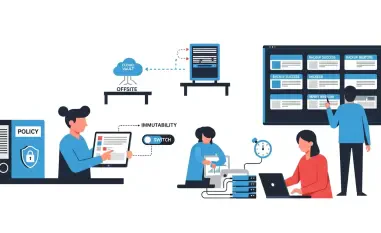In the ever-evolving world of cybersecurity, few names stand out as prominently as Malik Haidar. With years of experience safeguarding multinational corporations from digital threats, Malik has become a leading voice in analytics, intelligence, and security. His unique ability to blend business perspectives with cutting-edge cybersecurity strategies makes him a go-to expert on topics like bug bounty programs and the fight against sophisticated threats. Today, we dive into Apple’s recent announcement about doubling its top bug bounty award to $2 million, exploring what this means for the industry, the rising challenge of commercial spyware, and how such incentives shape the future of digital security.
Can you walk us through Apple’s decision to double its top bug bounty award to $2 million?
Apple’s move to increase its top payout to $2 million is a clear signal that they’re taking the evolving threat landscape very seriously. This hike likely stems from the growing complexity of attacks, especially those mimicking sophisticated mercenary spyware. By offering such a substantial reward, Apple is incentivizing the best researchers to focus on their ecosystem, ensuring vulnerabilities are found and fixed before malicious actors can exploit them. It’s also a competitive move—while Apple’s program is now one of the most lucrative, it’s in line with what other tech giants offer for critical flaws, though the potential to exceed $5 million with bonuses sets it apart.
How do the bonuses work that could push a researcher’s payout beyond $5 million?
Apple has structured bonuses to reward exceptional discoveries, particularly for bypassing features like Lockdown Mode, which is designed to protect high-risk users. These bonuses also apply to vulnerabilities found in beta software, where early detection can prevent widespread issues. Essentially, if a researcher uncovers a flaw that could have catastrophic impact or catches it before public release, Apple tacks on significant extra rewards. It’s a smart way to prioritize critical areas and encourage proactive hunting.
Why do you think Apple is placing such high rewards on specific categories like Gatekeeper bypasses or unauthorized iCloud access?
These areas are cornerstones of Apple’s security model. A Gatekeeper bypass, for instance, could allow unverified software to run on a device, undermining a key defense mechanism. Offering 0,000 for that shows how much they value protecting this gate. Similarly, unauthorized iCloud access, with a million reward, is a massive concern because it’s a treasure trove of personal data. Even though no successful exploit has been demonstrated, Apple knows a breach there would be devastating to user trust, so they’re putting big money on the line to stay ahead of potential threats.
How does this increase in bug bounty payouts connect to the growing issue of commercial spyware?
Commercial spyware, developed by companies targeting high-profile individuals like journalists and dissidents, poses a unique threat to Apple’s ecosystem. These are highly sophisticated exploits, often costing millions to create, and they can bypass even robust defenses. Apple’s higher payouts are a direct response—they’re essentially crowdsourcing the fight against these threats by motivating top-tier researchers to uncover flaws before spyware developers do. It’s a way to make attacks more expensive and harder to pull off for adversaries.
Apple has paid $35 million to over 800 researchers since 2020. What does this tell us about the impact of their Security Bounty program?
That figure is a testament to the program’s success and scale. Since launching in 2020, Apple has built a robust community of researchers who’ve collectively strengthened their products. It shows a commitment to transparency and collaboration—paying out that much means they’re not just fixing bugs but also preventing potential disasters. The involvement of over 800 researchers highlights how diverse and global this effort is, ultimately making devices safer for millions of users.
Can you explain what a WebKit sandbox escape is and why Apple values it at up to $300,000?
A WebKit sandbox escape refers to a vulnerability in the engine that powers Safari and other Apple web technologies, allowing an attacker to break out of the restricted environment meant to contain malicious code. It’s a big deal because web browsers are a common entry point for attacks. If someone can execute arbitrary code outside the sandbox with just one click, it’s a direct path to compromising a device. Apple’s $300,000 reward reflects the severity of this risk and their urgency to patch such flaws before they’re exploited in the wild.
What are wireless proximity exploits over radio, and why are they worth up to $1 million to Apple?
Wireless proximity exploits involve attacks that leverage radio-based technologies—like Bluetooth or Wi-Fi—to compromise a device without physical access, just by being nearby. These are incredibly dangerous because they can be executed stealthily, often without the user noticing. Think of scenarios like targeting someone in a public space. Apple’s $1 million bounty for these exploits underscores how critical they are, especially as devices become more interconnected. They want to ensure these attack vectors are locked down tight.
What’s your forecast for the future of bug bounty programs in combating advanced cyber threats?
I see bug bounty programs becoming even more central to cybersecurity strategies as threats grow in complexity. With adversaries like state-sponsored actors and commercial spyware developers upping their game, companies like Apple will likely continue to increase rewards and expand categories to attract the brightest minds. These programs will also evolve with more collaboration between tech firms and governments to tackle global challenges. Ultimately, I think we’ll see bug bounties not just as a reactive tool but as a proactive shield, shaping a safer digital world one payout at a time.













